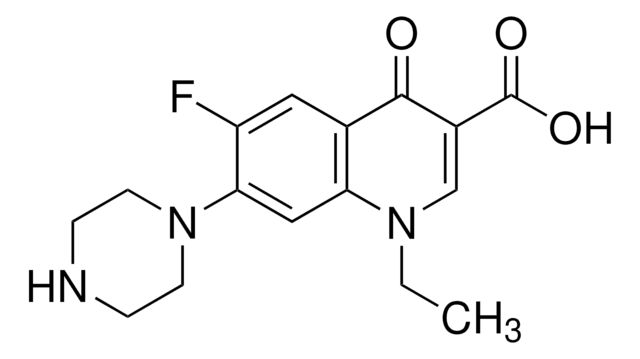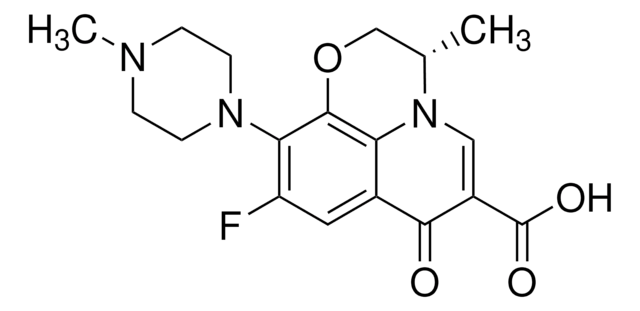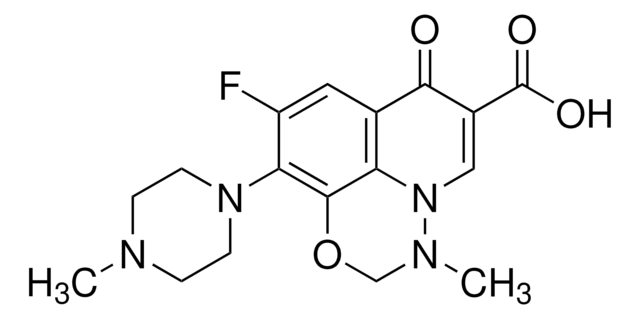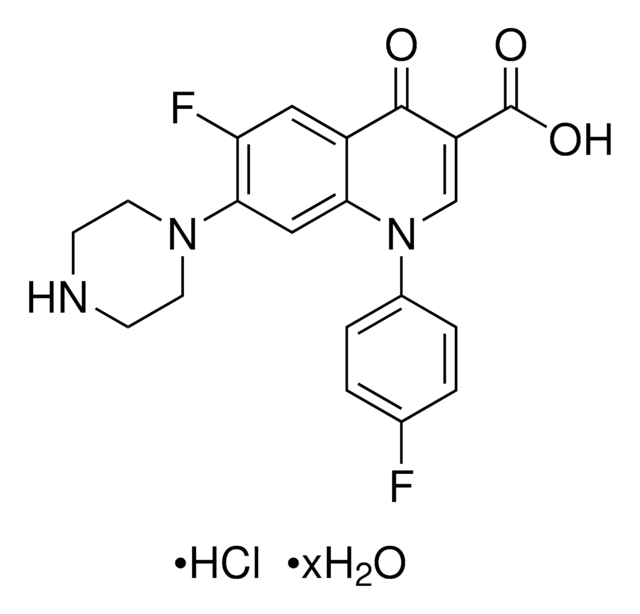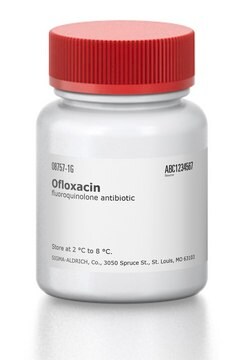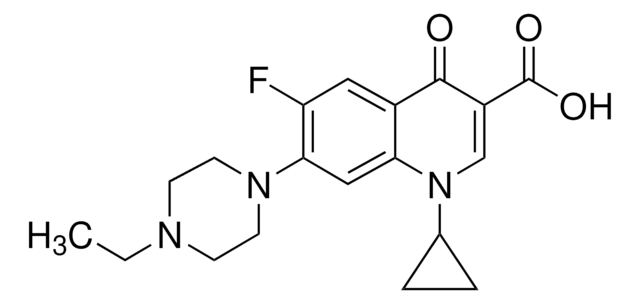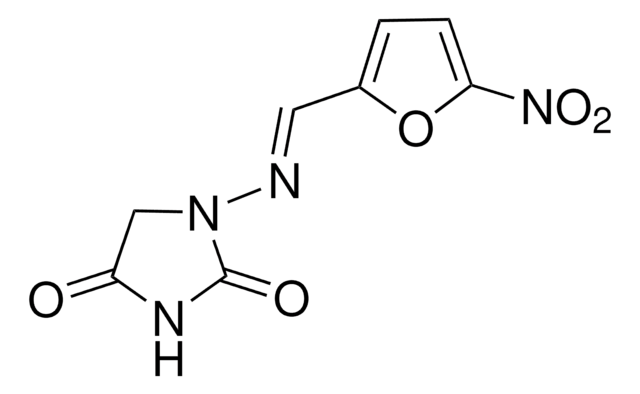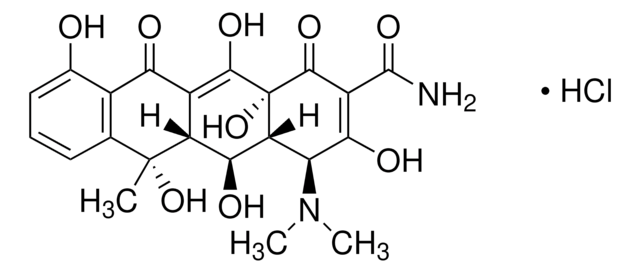56968
Sparfloxacin
≥98.0% (HPLC)
Synonim(y):
5-Amino-1-cyclohexyl-7-(cis-3,5-dimethylpiperazino)-6,8-difluoro-1,4-dihydro-4-oxo-3-quinolinecarboxylic acid
About This Item
Polecane produkty
pochodzenie biologiczne
synthetic
Próba
≥98.0% (HPLC)
Postać
powder
kolor
white to light yellow
spektrum działania antybiotyku
Gram-negative bacteria
Gram-positive bacteria
mycobacteria
mycoplasma
Tryb działania
enzyme | inhibits
ciąg SMILES
C[C@H]1CN(C[C@@H](C)N1)c2c(F)c(N)c3C(=O)C(=CN(C4CC4)c3c2F)C(O)=O
InChI
1S/C19H22F2N4O3/c1-8-5-24(6-9(2)23-8)17-13(20)15(22)12-16(14(17)21)25(10-3-4-10)7-11(18(12)26)19(27)28/h7-10,23H,3-6,22H2,1-2H3,(H,27,28)/t8-,9+
Klucz InChI
DZZWHBIBMUVIIW-DTORHVGOSA-N
informacje o genach
human ... KCNH1(3756) , TOP2A(7153)
Szukasz podobnych produktów? Odwiedź Przewodnik dotyczący porównywania produktów
Powiązane kategorie
Zastosowanie
Działania biochem./fizjol.
Opakowanie
Inne uwagi
Hasło ostrzegawcze
Warning
Zwroty wskazujące rodzaj zagrożenia
Zwroty wskazujące środki ostrożności
Klasyfikacja zagrożeń
Eye Irrit. 2 - Skin Irrit. 2 - STOT SE 3
Organy docelowe
Respiratory system
Kod klasy składowania
11 - Combustible Solids
Klasa zagrożenia wodnego (WGK)
WGK 2
Temperatura zapłonu (°F)
Not applicable
Temperatura zapłonu (°C)
Not applicable
Środki ochrony indywidualnej
dust mask type N95 (US), Eyeshields, Gloves
Certyfikaty analizy (CoA)
Poszukaj Certyfikaty analizy (CoA), wpisując numer partii/serii produktów. Numery serii i partii można znaleźć na etykiecie produktu po słowach „seria” lub „partia”.
Masz już ten produkt?
Dokumenty związane z niedawno zakupionymi produktami zostały zamieszczone w Bibliotece dokumentów.
Klienci oglądali również te produkty
Nasz zespół naukowców ma doświadczenie we wszystkich obszarach badań, w tym w naukach przyrodniczych, materiałoznawstwie, syntezie chemicznej, chromatografii, analityce i wielu innych dziedzinach.
Skontaktuj się z zespołem ds. pomocy technicznej